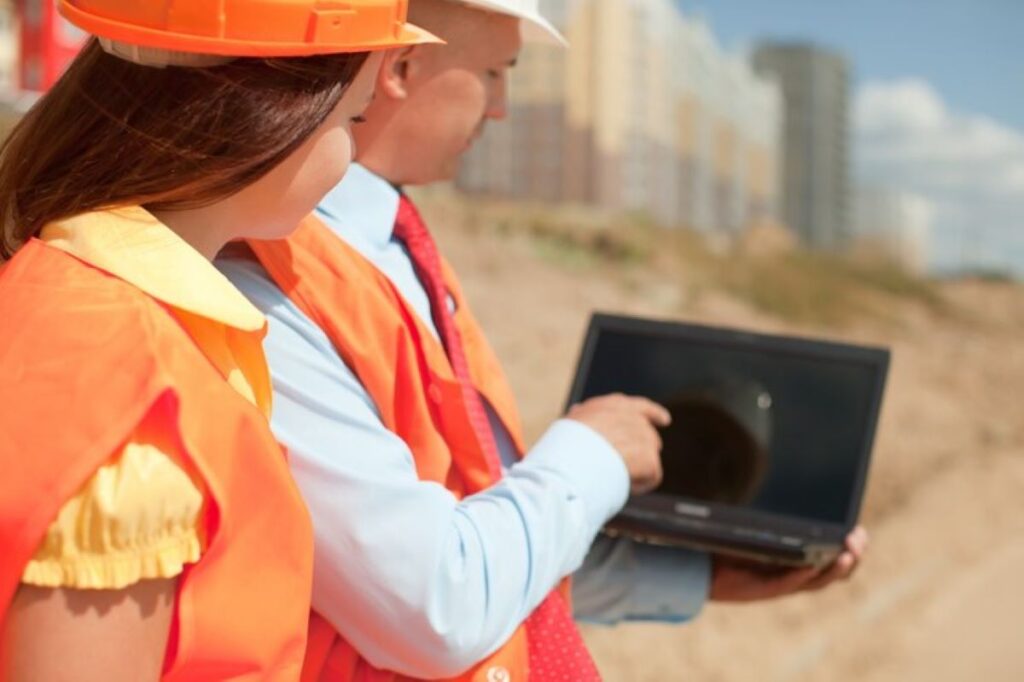Registered surveyors play a crucial role in the complex world of land development. These licensed professionals have the skills to accurately measure, map, and document land boundaries, ensuring that property dimensions are represented legally and correctly.
Land development projects depend greatly on the work done by registered surveyors. Their careful measurements and thorough documentation form the basis for:
- Determining property boundaries
- Preparing construction sites
- Planning infrastructure
- Verifying legal compliance
Surveyors do more than just take measurements. They are protectors of spatial accuracy, looking out for both public and private interests through their work. Their knowledge helps avoid expensive disputes, ensures rules are followed, and keeps land records intact.
In today’s complicated world of development, registered surveyors use cutting-edge technology and extensive technical expertise to:
- Create accurate digital maps
- Define property boundaries
- Direct construction activities
- Assist with legal paperwork
- Confirm zoning compliance
The influence of registered surveyors can be felt throughout the entire development process, starting from the initial assessment of a site all the way to the completion of a project. Their efforts protect investments, aid in making informed choices, and promote sustainable growth in communities across Australia.
Understanding Registered Surveyors
Becoming a registered land surveyor requires extensive education and professional development. A bachelor’s degree in surveying, spatial science, or related engineering field serves as the foundation. This academic preparation typically spans 4-5 years, covering essential subjects:
- Mathematics and geometry
- Geographic Information Systems (GIS)
- Land law and regulations
- Advanced measurement techniques
- Spatial data analysis
Professional registration demands practical experience under a licensed surveyor’s supervision. In Australia, candidates must complete:
- 2 years minimum supervised practice
- Professional assessment programs
- Written and practical examinations
- Project portfolio submissions
The Surveying and Spatial Sciences Institute (SSSI) and state-specific boards regulate the profession. These bodies establish strict standards for:
- Technical competency
- Professional ethics
- Public safety compliance
- Quality assurance
Maintaining registration requires dedication to ongoing professional development:
- Annual minimum CPD points
- Regular skills updates
- Technology training
- Industry workshops
- Professional mentoring
Registration renewal assessments evaluate surveyors’ adherence to current standards and technological advancements. This rigorous process ensures registered surveyors maintain high-quality service delivery across property, construction, and infrastructure sectors.
Core Responsibilities of Registered Surveyors in Land Development
Registered surveyors carry out essential tasks that are crucial for the success of land development projects. Their main responsibilities include:
1. Precise Land Measurements and Boundary Determinations
- Establishing accurate property boundaries through detailed field measurements
- Identifying existing survey markers and monuments
- Calculating precise coordinates using advanced mathematical principles
- Verifying historical survey records and property documentation
2. Legal Documentation and Mapping
- Creating detailed legal descriptions for property transactions
- Developing comprehensive survey plans for council submissions
- Preparing boundary certificates for property settlements
- Documenting easements and right-of-way specifications
3. Specialised Survey Types
- Boundary Surveys: Defining legal property lines and resolving disputes
- Topographic Surveys: Mapping terrain features, elevation changes, and natural landmarks
- Construction Surveys: Setting out building locations and infrastructure alignments
- Land Division Surveys: Subdividing properties and creating new lot configurations
These responsibilities require careful attention to detail and strict compliance with surveying standards. Registered surveyors use their knowledge in different stages of a project, starting from the initial site assessment to the final approval. Their work has a direct influence on property rights, development permissions, and construction precision, making their role essential in the land development process.
In jurisdictions like Harford County, Maryland, the Survey Section plays a vital role in overseeing these surveying activities to ensure compliance with local regulations and standards.
Technologies Used by Registered Surveyors
Modern surveying practices rely heavily on advanced technological solutions that enhance accuracy, efficiency, and data management capabilities. These cutting-edge tools have completely transformed the surveying industry.
GPS and Total Stations
- Real-Time Kinematic (RTK) GPS systems provide centimetre-level accuracy
- Robotic total stations enable single-person operation for precise measurements
- Integrated data collection systems streamline field-to-office workflows
Drone Technology and 3D Scanning
- Unmanned Aerial Vehicles (UAVs) capture high-resolution aerial imagery
- LiDAR sensors generate detailed point clouds for terrain mapping
- 3D laser scanners create accurate digital representations of complex structures
- Photogrammetry software processes drone imagery into orthomosaic maps
Digital Data Management
- Geographic Information Systems (GIS) organise spatial data layers
- Computer-Aided Design (CAD) software enables precise technical drawings
- Cloud-based platforms facilitate real-time data sharing
- Mobile applications support field data collection and verification
These technological advancements enable registered surveyors to handle larger projects with increased efficiency. The integration of multiple data sources through sophisticated software platforms creates comprehensive site documentation. Digital workflows reduce manual errors and provide detailed audit trails for quality assurance.
The adoption of these technologies requires continuous professional development as surveyors must stay current with emerging tools and methodologies. Regular calibration and maintenance of equipment ensure consistent accuracy across all project phases.
Collaboration with Stakeholders in Land Development Projects
Registered surveyors serve as crucial intermediaries between various stakeholders in land development projects. Their expertise bridges the gap between design concepts and practical implementation.
Architect and Engineer Partnerships
- Translating architectural visions into precise measurements and spatial data
- Providing detailed topographical information for engineering designs
- Identifying site constraints that impact design feasibility
- Offering technical guidance on land-related aspects during planning phases
Construction Team Coordination
- Setting out critical reference points for construction activities
- Verifying building positions against approved plans
- Conducting regular site checks to maintain accuracy
- Performing as-built surveys to document completed works
Government Authority Relations
- Submitting compliant survey plans to local councils
- Addressing zoning requirements and development controls
- Securing necessary approvals for land subdivisions
- Maintaining documentation for regulatory compliance
The collaborative nature of surveying work extends to specialised projects, such as telecommunications infrastructure for NBN and Telstra, where precise coordination with multiple stakeholders becomes essential. Registered surveyors from firms like Wumara Group demonstrate this collaborative approach through their work with School Infrastructure NSW, ensuring seamless integration between different project phases and stakeholder requirements.
This interconnected approach to stakeholder management helps maintain project momentum while upholding technical standards and regulatory requirements across all development stages.

Legal and Regulatory Impact of Registered Surveyors
Registered surveyors play a vital role in ensuring that land development projects comply with legal requirements. Their accurate measurements and documentation have a direct impact on following land use laws and zoning regulations. By using careful surveying techniques, these professionals make sure that development projects meet specific criteria for:
- Building setbacks
- Height restrictions
- Density limitations
- Land subdivision regulations
Protecting Property Rights
One of the main responsibilities of registered surveyors is to protect property rights. Their knowledge and skills are extremely valuable in:
- Establishing precise boundary lines
- Resolving issues of encroachment
- Determining the locations of easements
- Identifying disputes over right-of-way
Expert Testimony in Legal Matters
In legal cases, registered surveyors offer expert testimony that carries significant influence in court decisions. Their professional opinions assist in resolving various disputes related to land:
- Boundary disagreements between neighbouring properties
- Determinations of historical property lines
- Conflicts over access rights
- Cases involving zoning violations
Maintaining Official Land Records
The work of registered surveyors also involves keeping official land records that serve as authoritative references for:
- Property transactions
- Development applications
- Infrastructure planning
- Legal documentation
By upholding regulatory standards, they help avoid expensive legal disputes and ensure the smooth progress of development projects while protecting the interests of everyone involved.
Contributions to Various Sectors within Land Development
Registered surveyors serve as essential contributors across multiple sectors of land development, delivering critical services that shape the built environment.
Real Estate Sector
- Precise boundary identification for property transactions
- Accurate land measurements for property valuations
- Documentation of easements and encroachments
- Creation of detailed subdivision plans for development projects
Construction Industry
- Site layout verification before construction begins
- Regular monitoring of construction progress
- Detection of potential structural issues through precise measurements
- Implementation of quality control measures through accurate surveying data
Urban Planning and Infrastructure
- Creation of detailed topographic maps for city planning
- Documentation of existing infrastructure locations
- Support for public works projects through accurate spatial data
- Maintenance of cadastral records for local authorities
The impact of registered surveyors extends beyond basic measurements. Their expertise helps prevent costly construction errors, streamlines property transactions, and supports informed decision-making in urban development. A single surveying error could result in significant financial losses, legal disputes, or construction delays.
Recent projects demonstrate this vital role – from supporting telecommunications infrastructure deployment for NBN to assisting School Infrastructure NSW with educational facility developments. These contributions highlight the surveyor’s role in creating accurate, reliable foundations for development across various sectors.
Case Examples Highlighting the Role of Registered Surveyors
The practical impact of registered surveyors becomes evident through their contributions to major telecommunications and government infrastructure projects across Australia.
Telecommunications Sector Projects
- Telstra network expansion projects require precise surveying for optimal tower placement and cable routing
- NBN rollout success relies on accurate land surveys to:
- Determine suitable locations for network infrastructure
- Map underground utility positions
- Plan efficient fibre optic cable pathways
- Ensure compliance with local planning regulations
School Infrastructure NSW (SINSW) Initiatives
- Registered surveyors provide critical support through:
- Detailed site analysis for new educational facilities
- Boundary surveys for school property expansions
- Topographic mapping for building placement
- Construction set-out surveys ensuring accurate building positioning
These projects demonstrate the technical expertise required in modern surveying. For telecommunications projects, surveyors must account for signal coverage requirements while considering existing infrastructure. In educational facility development, surveyors balance space utilisation with safety requirements and future expansion possibilities.
The complexity of these projects highlights how registered surveyors integrate multiple data sources:
- Geographic Information Systems (GIS)
- Historical land records
- Current infrastructure maps
- Environmental impact assessments
This comprehensive approach ensures project success while maintaining compliance with regulatory requirements and industry standards. Click here to get how Sydney Surveyors ensure accurate land surveys.

Supporting Sustainable Land Development Practices
Registered surveyors play a vital role in promoting environmentally conscious land development through their expertise and commitment to sustainability principles. Their work integrates environmental considerations into every stage of land development projects.
Environmental Protection Measures:
- Identification and mapping of sensitive ecological areas
- Assessment of potential environmental impacts
- Documentation of protected species habitats
- Preservation of natural water courses
- Protection of native vegetation
The implementation of regulatory frameworks requires precise surveying data to safeguard natural resources. Registered surveyors conduct detailed environmental assessments to:
- Map flood-prone areas
- Identify soil contamination zones
- Document heritage sites
- Monitor erosion control measures
- Track environmental compliance
Ethical surveying practices create lasting benefits for communities through:
“Sustainable development meets the needs of the present without compromising future generations’ ability to meet their own needs”
- Accurate land-use planning that preserves green spaces
- Protection of Indigenous cultural sites
- Balance between development needs and environmental conservation
- Implementation of water-sensitive urban design
- Integration of renewable energy infrastructure requirements
These practices align with Australian environmental protection standards while supporting economic growth. Registered surveyors work closely with environmental scientists to establish buffer zones around sensitive areas and create detailed management plans for sustainable development outcomes.
Conclusion
Registered surveyors are crucial in land development, ensuring accuracy and professionalism. Their knowledge impacts the built environment through precise measurements, boundary determinations, and compliance checks. These experts provide essential value by:
- Maintaining the highest standards of accuracy in land measurements and documentation
- Safeguarding legal compliance and property rights
- Driving efficiency in construction and development projects
- Embracing technological advancements to enhance service delivery
The role of registered surveyors continues to evolve with emerging technologies and changing regulations. Their commitment to excellence, combined with advanced surveying tools and methodologies, ensures the sustainable growth of communities. As land development becomes increasingly complex, the expertise of registered surveyors remains indispensable for successful project outcomes and responsible resource management.
